site search
online catalog
IDENTIFIED CONFEDERATE CANTEEN: 2nd AND 42nd ALABAMA, CARVED IN THE TRENCHES AT VICKSBURG IN JUNE 1863
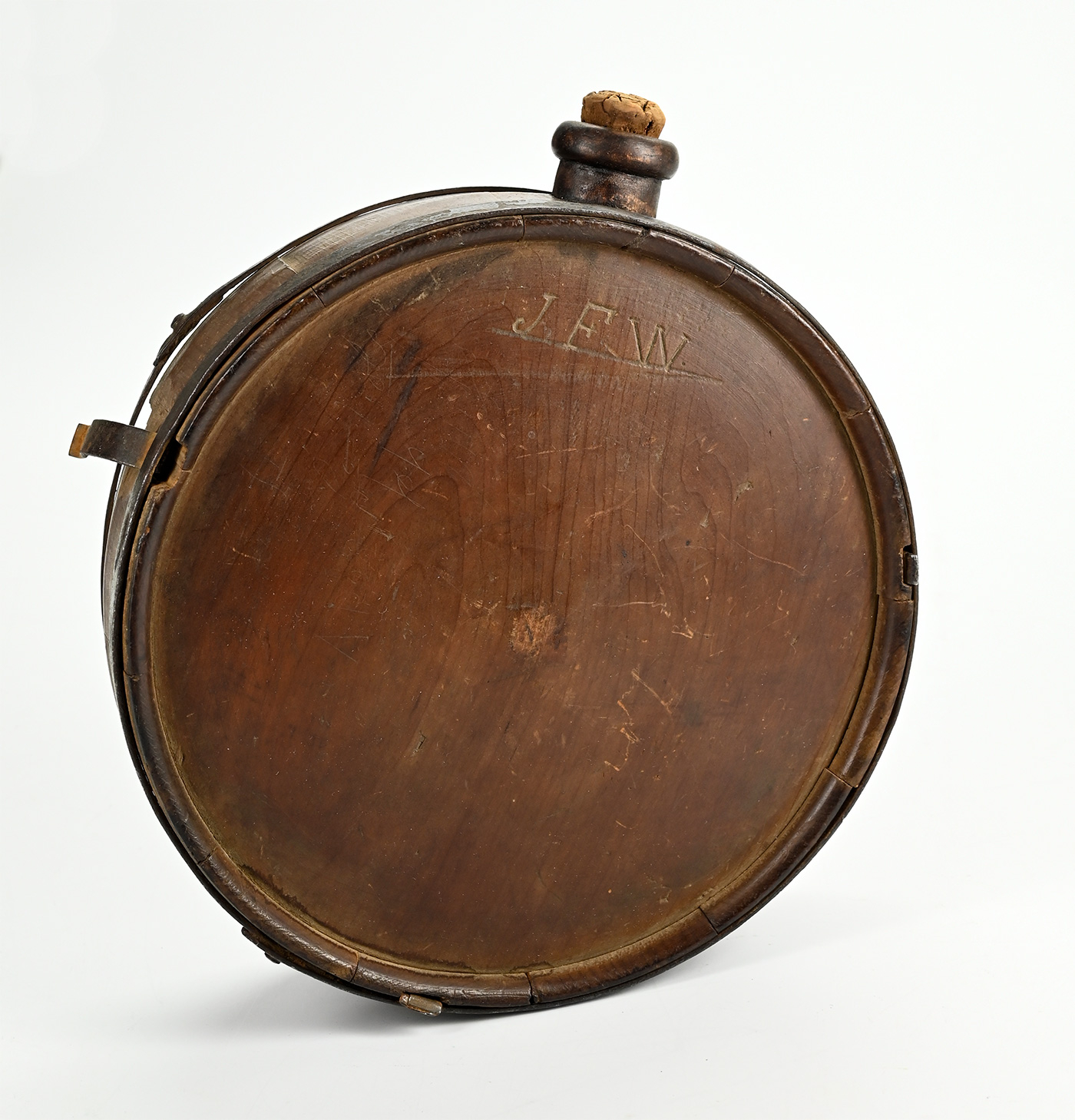
Hover to zoom

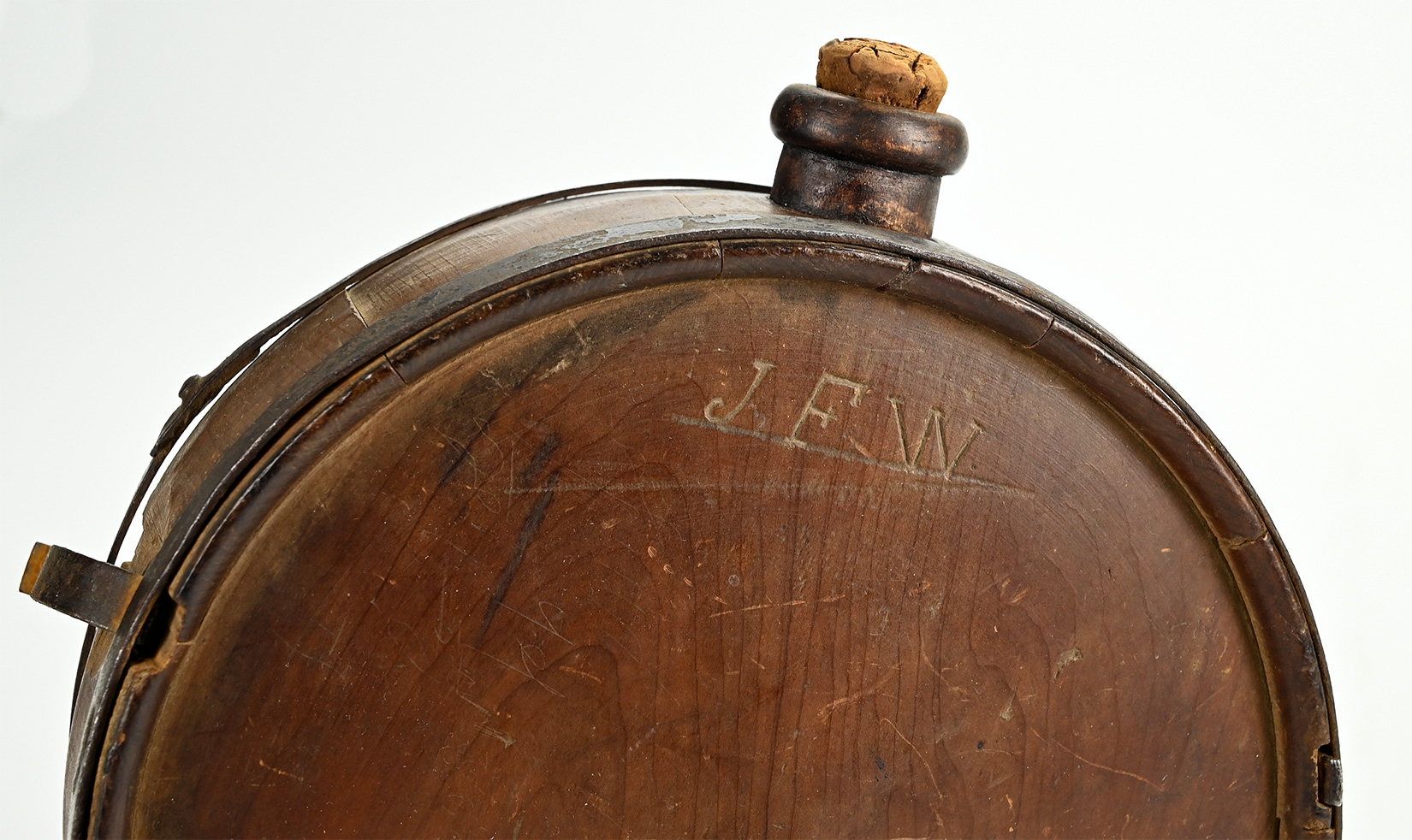
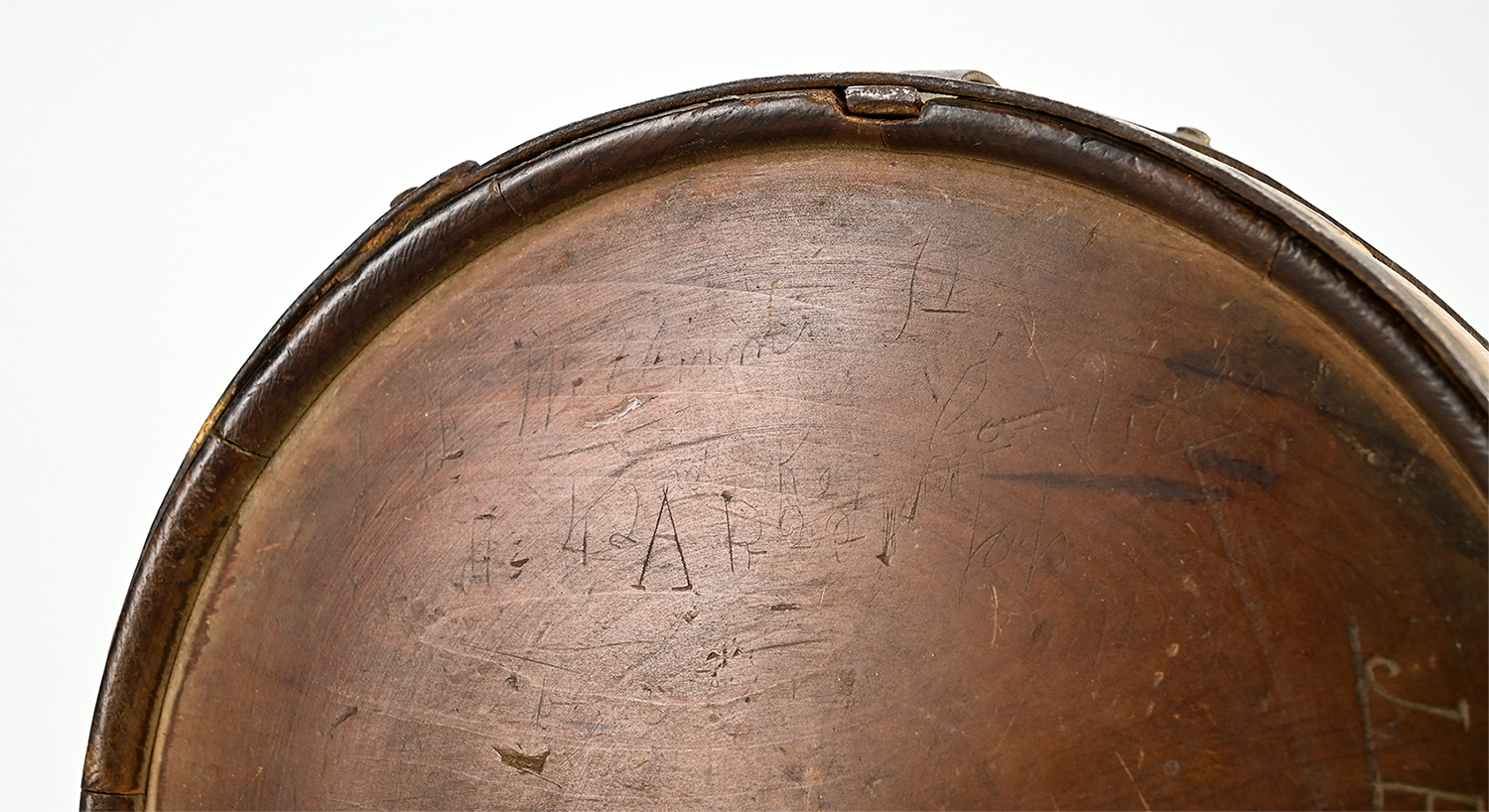
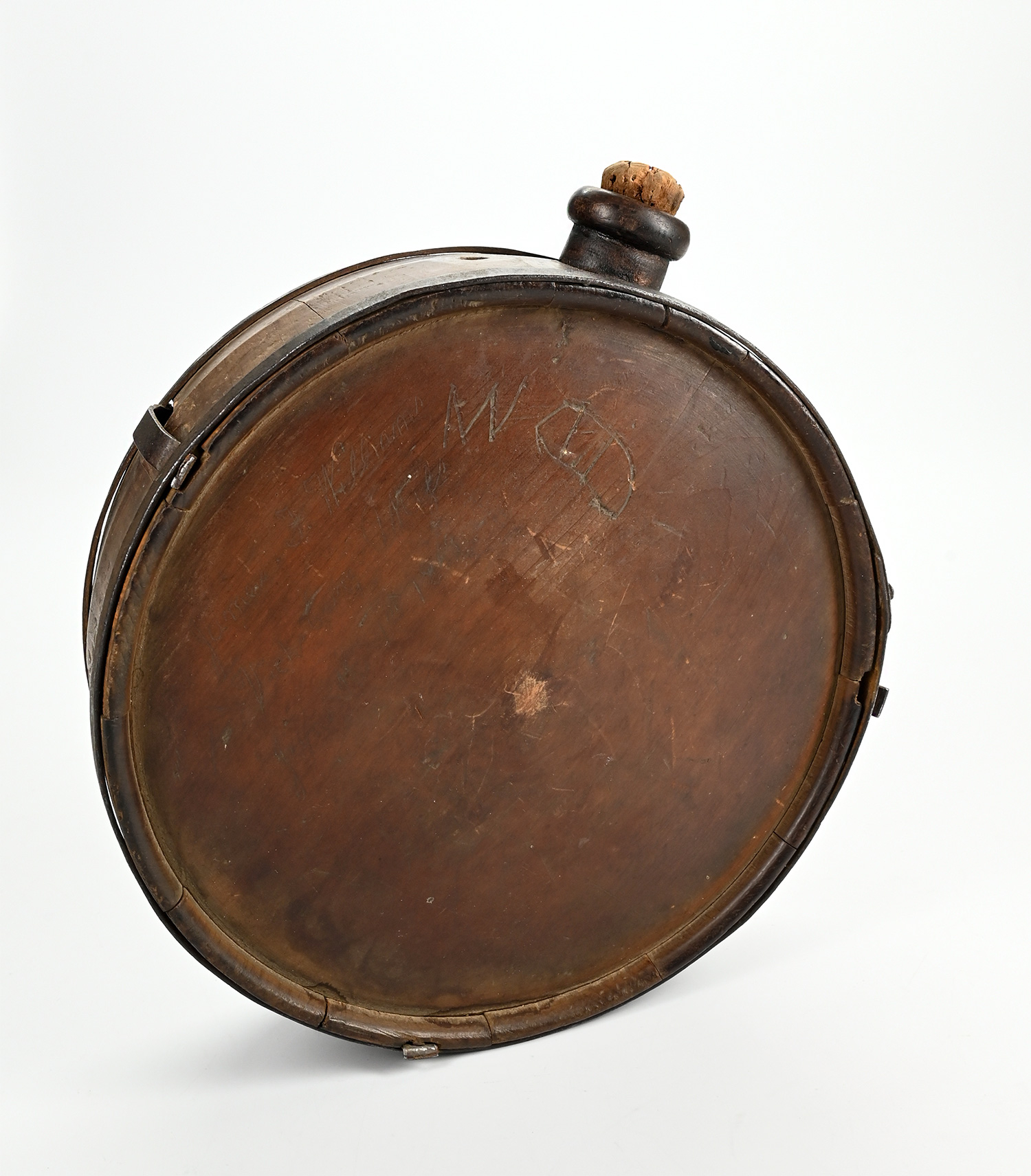
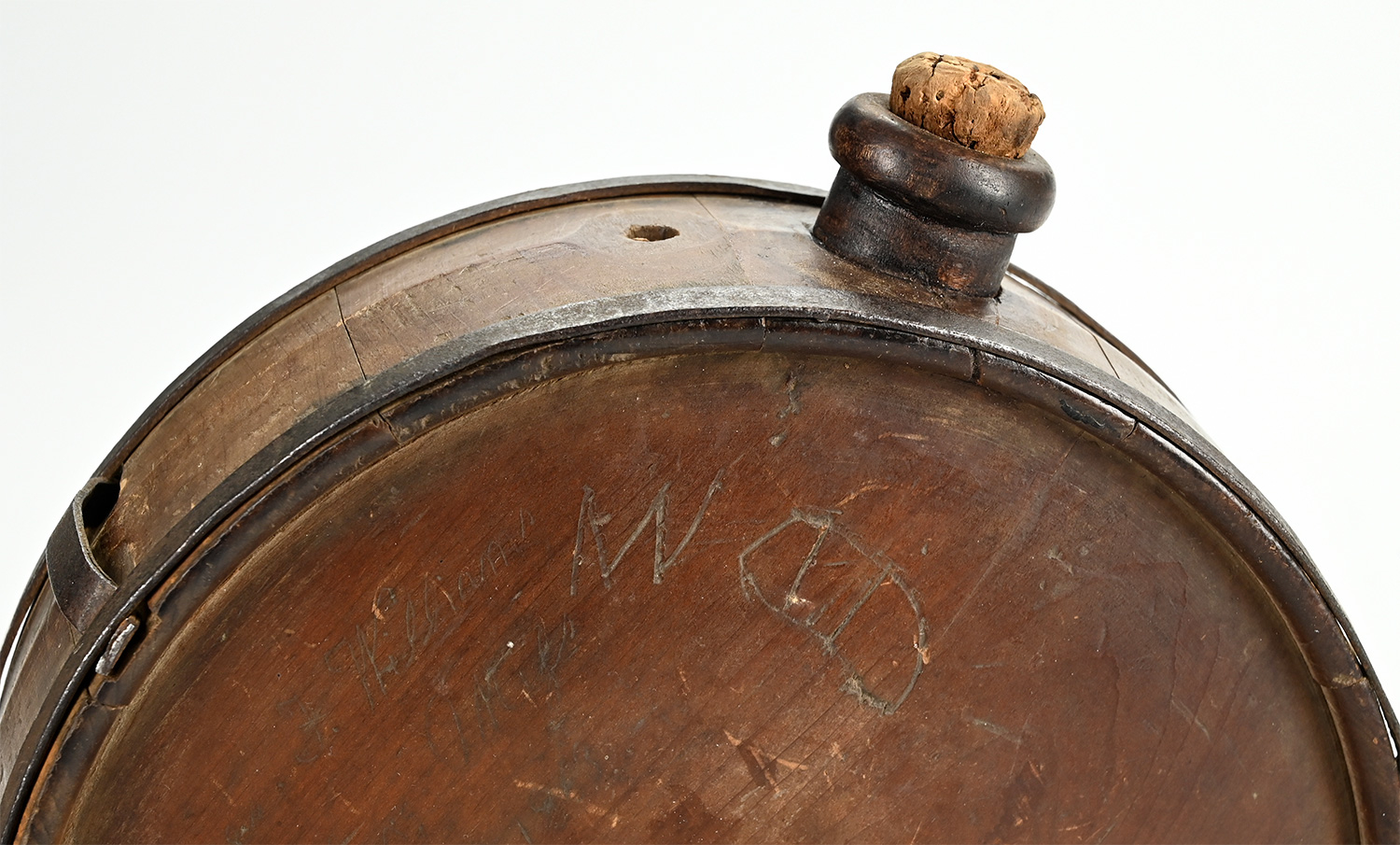
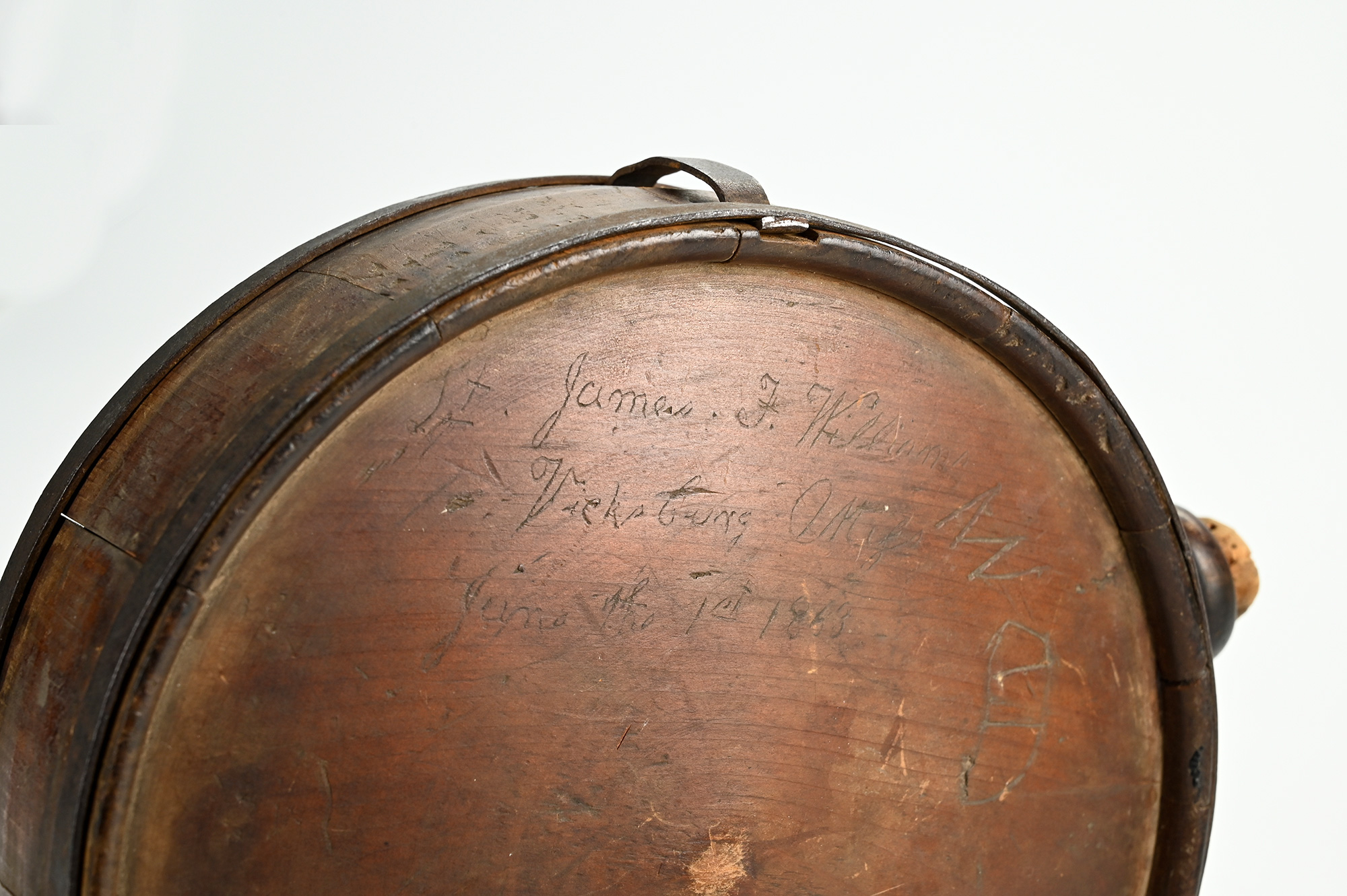

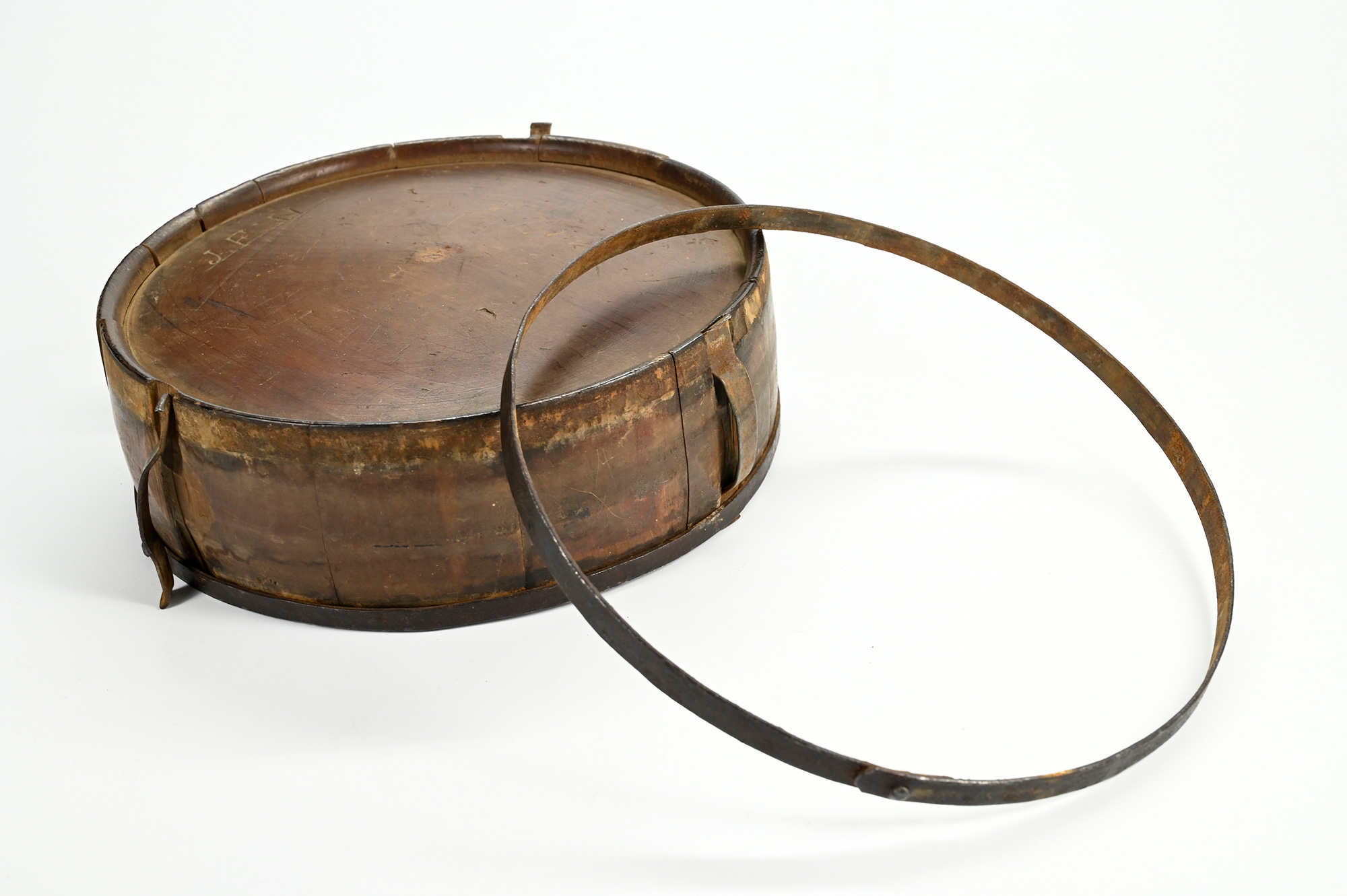
$4,250.00 SOLD
Quantity Available: None
Item Code: 1164-04
This is a great wood canteen with a Confederate soldier’s carved identification. These were easily made by coopers and woodworkers throughout the Confederacy. The turned wood faces are connected by wood staves held together by narrow iron bands, with three cross bands keeping them in place around the canteen and functioning as brackets for a shoulder strap. This one still retains its wooden spout as well and shows a small secondary hole likely made to avoid a vacuum in drinking or air bubble in filling. These were recognized as the quintessential Confederate canteen by both sides and were eagerly sought after as wartime souvenirs by Union troops and valued for their practicality by Confederates. Their wood faces offered a ready surface for an owner or captor to establish his ownership. This one was carved by the owner four times. Two are simple sets of initials likely done during his first service as an enlistedman. One set represents a false start, too near the edge, where he could not rest his hand and the knife slipped; the other is a better executed “J.F.W.” Carved lightly on the same side is "J F Williams / 42 42 Ar __ Vols" with some other indecipherable letters. He later had time on his hands while besieged in Vicksburg and used it to better effect with a loose script carving: “Lt James F. Williams / Vicksburg Miss / June the 1st 1863.”
James Franklin Williams did two tours of duty: the first as a private in the 2nd Alabama; the second as lieutenant in the 42nd Alabama, of which the 2nd regiment had formed the nucleus in Spring 1862. He first enlisted on March 26, 1861, to serve twelve months as a private in Co. B of the 2nd Alabama. The regiment was posted at Fort Morgan at Mobile, a U.S. installation seized by state troops in January 1861 and turned over to the Confederate government at about the time the regiment was assigned to its garrison. In Spring 1862, with one-year enlistments about to expire and the introduction of a conscription act, new regiments were formed for Confederate service and Williams formally reenlisted in Co. B of the new 42nd Alabama. He was elected 2nd Lieutenant, his rank dating to March 17, 1862, the day after the official organization of the regiment. At that time he was described as 27-years old, born in Pickens, Alabama, having blue eyes, auburn hair, fair complexion, and standing 6 feet tall. He gave his profession as “clerk,” though we find him showing up as a farmer before and after the war.
The regiment mustered in 904 men and spent three months training at Camp Hardee near Columbus, Mississippi, during which time Williams was promoted to 1st Lieutenant in late June. They saw their first combat in October, under Van Dorn, at Corinth, where the regiment was part of the disastrous assault on Battery Robinette, well known from photographs taken of Confederate dead in front of its breastworks, losing more than half of the 700 men it took into action. Williams was among the many initially listed as missing in the fighting. Some were captured and paroled, others were likely scattered in the fighting and retreat, which included a fight the next day. Records are fragmentary and we can only say he is with the company again for the 1863 Vicksburg Campaign, where they were involved preliminary maneuvering until the regiment moved into the city defenses on May 17. There they were heavily engaged in the repelling the assault of May 22, one member of the regiment saying the point they held was the object of the most daring Federal attack.
By May 27, rations began to run short, and the regiment was confined to the trenches for the duration of the siege, during which they lost 27 men killed or wounded. Upon the surrender of the post on July 4, Williams was paroled on July 10 with the rest of the regiment and was with them in the parole camp at Demapolis awaiting exchange in early Fall. He may have lost his weapons as part of the surrender, but as a necessary piece of private property he most likely kept a close watch on his canteen. He was likely with the regiment after it was officially exchanged and took part in the siege of Chattanooga and the Battles of Lookout Mountain and Missionary Ridge in November: his signature shows up on documents for the 3rd and 4th Quarter of 1863 as commander of the company.
The regiment wintered around Dalton, Ga., was involved in the defense of that place in February, and in the Spring took part in the fighting around Atlanta. A note in Williams’ file indicates he was absent from May 15, 1864, on a certificate from a medical examining board. This may reflect a wound at the Battle of Resaca, fought on that date, but his service record only picks him up again as being paroled at Gainesville, Alabama, on June 16, 1865, so we can’t be sure when or if he rejoined the regiment. His parole lists him still as 1st Lieutenant of Co. B, 42nd Alabama, but he is included in the surrender of “the Army of the Department of Alabama, Mississippi and East Louisiana.”
The regiment in the meantime had served throughout the Atlanta Campaign, suffering heavily on July 28 (Ezra Church) before being assigned to the defenses of Mobile from August to January 1864, when it returned to the Army of Tennessee in January, and after consolidation with other units, fought it last battle at Bentonville, a mere 98 men making it to the surrender of the unit with Johnston. The regiment purportedly suffered a large number of sick while again at Mobile, so it is possible Williams rejoined the regiment and was left behind when they rejoined the Army of Tennessee, but cannot be sure. We can, however, add a few more personal details. Williams had been born in Pickens, Alabama, April 30, 1834. A 1907 census of veterans picks him up in Tuscaloosa, where he died at age 79 on Sept. 4, 1913. He had married in 1865. His wife predeceased him, in 1912. The couple had at least three children.
This canteen is in great condition and would make a wonderful part of a Confederate officer’s display. [SR] [ph:m]
~~~~~~~~~~~~~~~~~~~~~~~~~~~~~~~~~~~
THIS ITEM, AS WITH ALL OTHER ITEMS AVAILABLE ON OUR WEB SITE,
MAY BE PURCHASED THROUGH OUR LAYAWAY PROGRAM.
CLICK HERE FOR OUR POLICIES AND TERMS.
THANK YOU!
Inquire About IDENTIFIED CONFEDERATE CANTEEN: 2nd AND 42nd ALABAMA, CARVED IN THE TRENCHES AT VICKSBURG IN JUNE 1863
Most Popular
Historical Firearms Stolen From The National Civil War Museum In Harrisburg, Pa »
Theft From Gravesite Of Gen. John Reynolds »
Selection Of Unframed Prints By Don Troiani »
Fine Condition Brass Infantry Bugle Insignia »
British Imported, Confederate Used Bayonet »
Scarce New Model 1865 Sharps Still In Percussion Near Factory New »
featured item
A RARE SURVIVOR: EARLY-WAR CONFEDERATE MARKED BRITISH P53 ARTILLERY CARBINE #1500 WITH A TENNESSEE PROVENANCE
British artillery carbines were used by both Confederate cavalry and infantry: in October 1862 Jeb Stuart wanted to exchange rifles carried by some his troopers for “Enfield carbines (artillery) in the hands of our infantry.” This is one of just… (846-571). Learn More »


